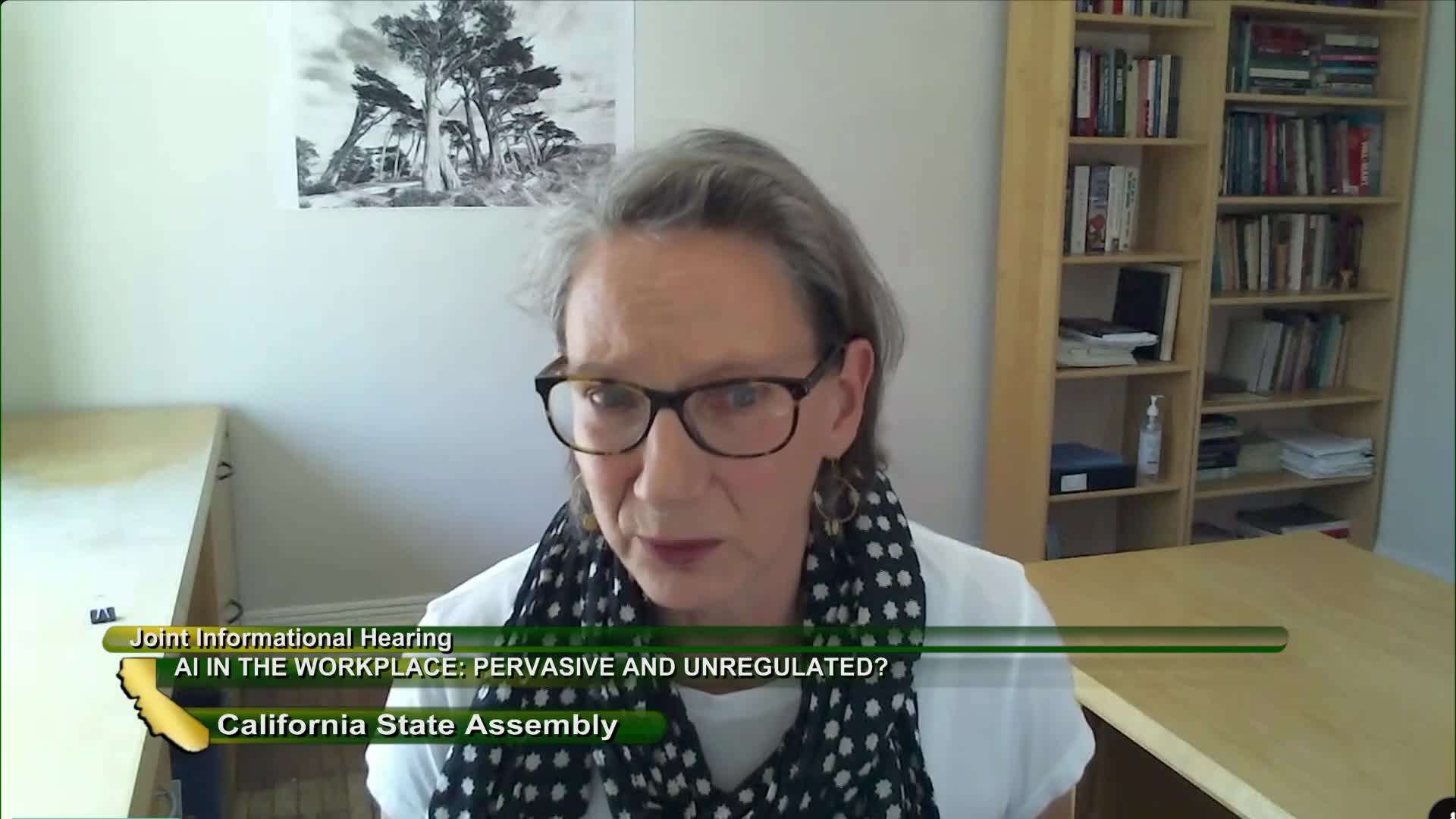Workers Face Unregulated Tech Risks in Data Driven Workplace
August 07, 2024 | California State Assembly, House, Legislative, California

This article was created by AI summarizing key points discussed. AI makes mistakes, so for full details and context, please refer to the video of the full meeting. Please report any errors so we can fix them. Report an error »

In a recent government meeting, experts highlighted the urgent need for comprehensive regulations surrounding workplace technologies, particularly as they relate to artificial intelligence (AI) and data-driven systems. The discussions underscored a significant gap in existing labor laws, which currently fail to protect workers from potential harms associated with these technologies.
Speakers emphasized that workplace technologies vary widely, from basic payroll systems to advanced AI models that predict employee behavior. However, the introduction of these often untested technologies occurs with minimal oversight, leaving workers vulnerable. Currently, U.S. employees lack fundamental rights regarding their data, including the right to know what information is collected, the ability to review or correct it, and the right to challenge decisions made by algorithms.
The meeting revealed a consensus among legal scholars that existing labor laws are inadequate for the modern, data-driven workplace. While California's Consumer Privacy Act (CCPA) has granted some rights to workers, advocates argue that these measures fall short compared to protections available in other regions, such as the European Union.
Concerns were raised about the negative impacts of technology on workers, particularly marginalized groups, who face discrimination and are often employed in roles that are the first to experience technological changes. The potential for increased work intensity, deskilling, and loss of autonomy were highlighted as significant risks.
Advocates called for the establishment of new labor standards tailored to the 21st-century workplace, which would define worker rights and employer responsibilities regarding technology use. Key proposals included ensuring transparency about data-driven technologies, prohibiting untested systems, and granting workers the right to organize and participate in decisions about technology implementation.
The meeting concluded with a call for a collaborative approach to technology in the workplace, emphasizing that with proper regulations and worker involvement, technology can enhance productivity while promoting equity and safety. The discussions set the stage for further exploration of these critical issues, as stakeholders seek to navigate the complex landscape of workplace technology and its implications for the future of work.
Speakers emphasized that workplace technologies vary widely, from basic payroll systems to advanced AI models that predict employee behavior. However, the introduction of these often untested technologies occurs with minimal oversight, leaving workers vulnerable. Currently, U.S. employees lack fundamental rights regarding their data, including the right to know what information is collected, the ability to review or correct it, and the right to challenge decisions made by algorithms.
The meeting revealed a consensus among legal scholars that existing labor laws are inadequate for the modern, data-driven workplace. While California's Consumer Privacy Act (CCPA) has granted some rights to workers, advocates argue that these measures fall short compared to protections available in other regions, such as the European Union.
Concerns were raised about the negative impacts of technology on workers, particularly marginalized groups, who face discrimination and are often employed in roles that are the first to experience technological changes. The potential for increased work intensity, deskilling, and loss of autonomy were highlighted as significant risks.
Advocates called for the establishment of new labor standards tailored to the 21st-century workplace, which would define worker rights and employer responsibilities regarding technology use. Key proposals included ensuring transparency about data-driven technologies, prohibiting untested systems, and granting workers the right to organize and participate in decisions about technology implementation.
The meeting concluded with a call for a collaborative approach to technology in the workplace, emphasizing that with proper regulations and worker involvement, technology can enhance productivity while promoting equity and safety. The discussions set the stage for further exploration of these critical issues, as stakeholders seek to navigate the complex landscape of workplace technology and its implications for the future of work.
View full meeting
This article is based on a recent meeting—watch the full video and explore the complete transcript for deeper insights into the discussion.
View full meeting
